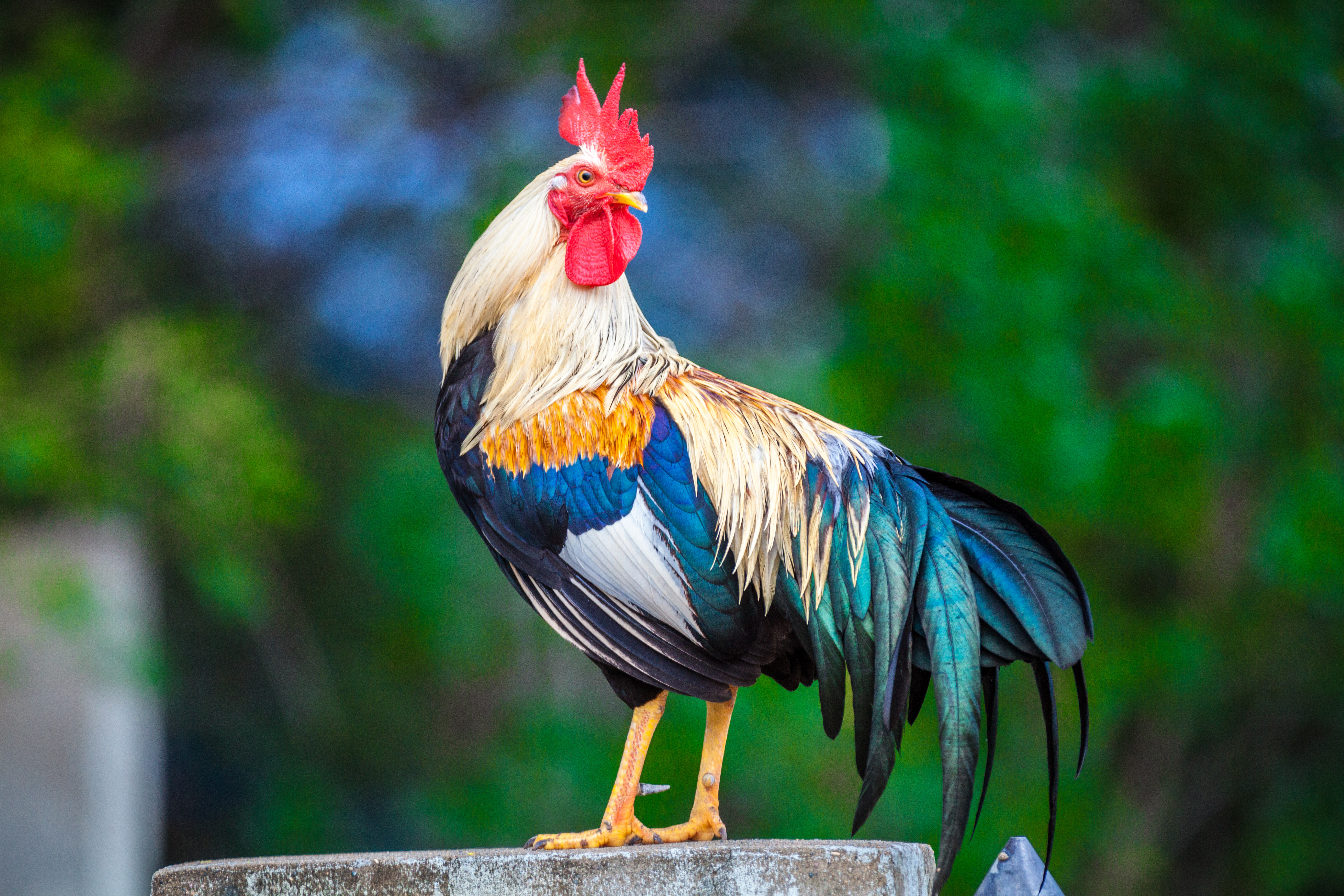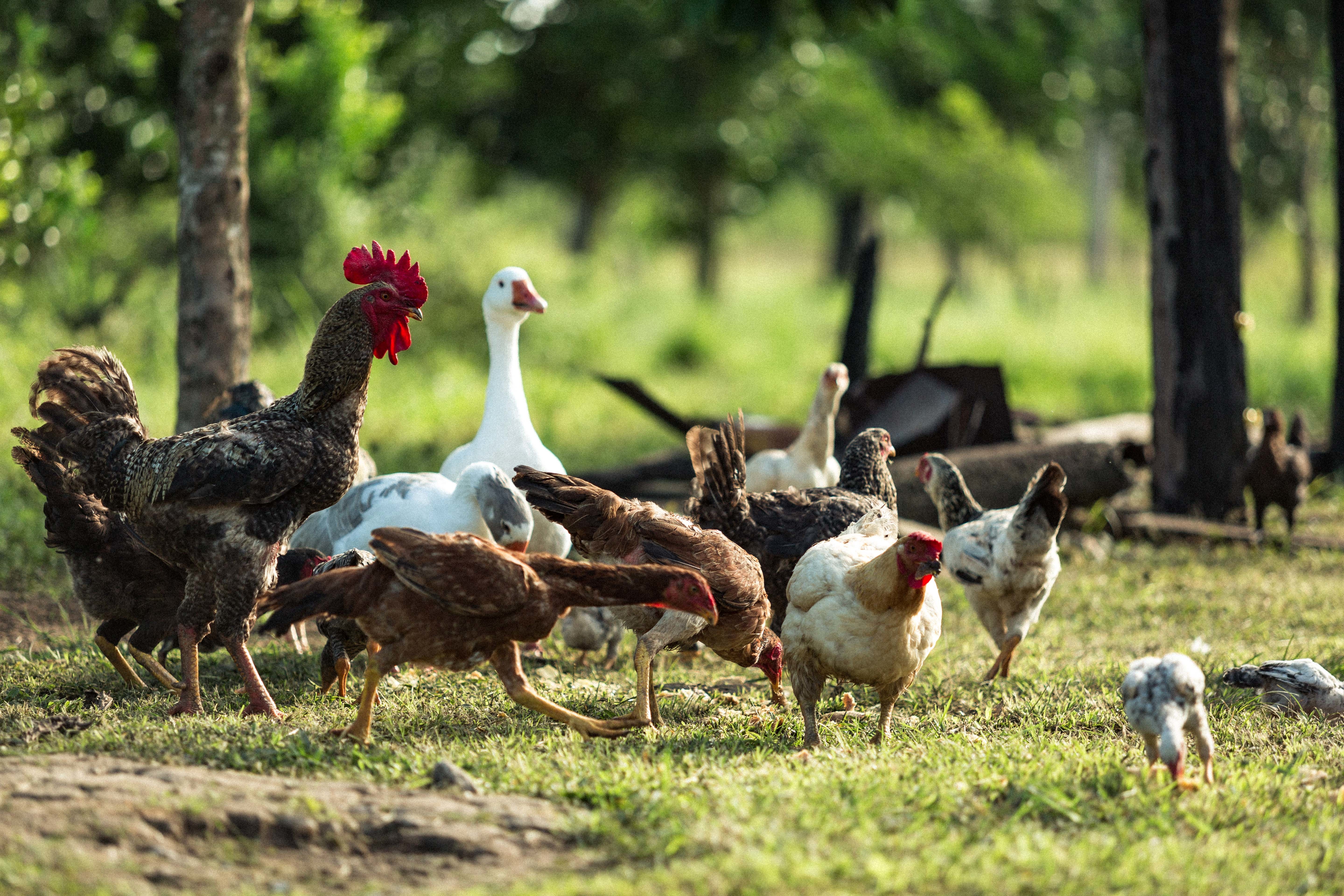



Your questions answered: the benefits of a rooster and the challenges of mix-species flocks
Mike Colley answers readers' questions regarding flock management, offering tips and advice for the everyday keeper.Is it beneficial to have a rooster in my backyard flock and, if I choose to have one, what should I know?
I adore cockerels - something I inherited from my father. The gloss of their feathers, the erect and assertive stance, sometimes with beautiful colours and big fan-like tails - and sometimes with large, unusual combs and feathery crests. Roosters have big characters that can never really be conveyed in a painting or photograph, from the tiny Serama to the massive commercial meat birds, there is always a sense of impressiveness, even if its only in the mind of cockerel himself.
Other than the character and beauty of these birds and the way they interact with humans, there is little benefit to having a rooster. However, a rooster somehow makes a flock complete in quite subtle ways. Females can feel more secure and fulfilled with a male around; you will notice females pecking at the wattles, beak and face of a male. The male seems to really enjoy this, like a dog being stroked. The disadvantages of having a male around, though, are numerous and here’s a brief list:

Unwanted noise
The early morning crowing will really upset your neighbours and make you very unpopular in the neighbourhood. As well as the crowing there are the loud alarm calls which can go on all day with few breaks.
Aggression
Having a little bantam cockerel running at you and pecking your heels can be quite amusing but having a 7kg rooster chasing your children around the garden is quite a different matter. Aggression in males tends to be unpredictable and not necessarily breed correlated - it is also impossible to predict towards whom the aggression will be directed. Basically, your cockerel, unless socialised from a very early age, sees anything bigger than himself as a threat, which he will either submit to or relentlessly assault. Unless you can put something between you and him, or run very fast, he will keep going and I can assure you pecks and kicks can be very painful, draw blood and leave bruises.
Fertile eggs
Not everyone wants to eat fertile eggs. In fact, the thought of eating fertile eggs is abhorrent to some. It’s not currently illegal to sell fertile eggs and being fertile does not mean you will ever see a developed embryo. They look the same, taste the same and pose only a small increase to the risk of carrying a food-borne sickness, which will be eradicated once cooked.
Bullied females
Over-mating is a really common problem in a small domestic flock. Unless you have more than 15 females to your one male, you may well have females with bare backs and bald backs of heads. You may even have birds with severe lacerations on their flanks. This can be elevated by trimming spurs and toe nails; you can also get saddles for hens that prevent damage.
In conclusion, having a cockerel around is great, but every rose has its thorns - and roosters can be a lot of trouble.
What are the benefits and challenges of having a mix-species flock of chickens, ducks and geese?
For the birds themselves, there is no advantage to having a mixed flock. Each group of birds fills a different ecological niche in its wild form. Although ducks and geese may be seen together in a wild or feral setting, they have little to do with each other. For us, though, with our desire for the eclectic, a mixed flock in the right setting makes an interesting sight and the interactions between the species can often be a source of great amusement and the occasional mystery. I myself have kept and raised such flocks including turkeys in the mix - although I had a very large garden where the grass never became poached.

The biggest challenge to keeping a mixed flock is disease, and today, with the spectre of avian influenza, this has never been of greater significance. Going back 150 years, chickens and ducks were not of great commercial interest. Yes, thousands of geese were kept for the Christmas table alongside a few turkeys in more recent times, but nothing like the scale they are today. If, like me, you’re a bit of a romantic and long to recreate those pastoral scenes from the pictures of Ludlow and the like, then sadly disease and economics have pretty much knocked all of that on the head. Saying that, in the years I had mixed flocks, even when approaching a commercial scale, I did not encounter disease in a way in which you would see masses of dead birds strewn across fields. I knew, though, from post-mortems and regular disease monitoring that subclinical forms of Marek’s, coccidiosis, mycoplasma and salmonellas were ever present. If I had further intensified the operation a clinical outbreak would have been an inevitability.
The reasons for increased disease risk are less to do with mixed species and more to do with multiple sources of the original birds, plus the influx of wild populations mixing or passing close to your flock. For instance, it is said that you should not mix chickens and turkeys because of the risk of black head (histomoniasis). The thinking around this is that black head in chickens can be subclinical on a commercial scale, but if it infects turkeys it will kill them en masse. Black head in severe cases will kill chickens as well; it works both ways.
Less foreseeable issues arise from aggression and competition for food. Cockerels and ganders have a well-deserved reputation for being vicious brutes, a characteristic they are very willing to display towards different species. Ganders will kill cockerels, grabbing them by the neck and forcing them to the ground. Randy cockerels can also present an issue for unsuspecting ducks. Although I’ve never seen it, it would not surprise me at all if a sex-mad drake tried to have its way with the hens. Drakes in breeding condition will literally force themselves on ducks. On water a duck might occasionally be seen scrambling for breath as a hoard of drakes jostle atop her to claim mating rights.
The answer to all these issues is to do your homework and prepare for the unexpected. Give your birds plenty of space and a source of clean water - a shower running for 20 minutes each day is better than a small, easily fouled pond. Provide large housing, if the flock is kept together at night, and find the resources to remove males for a time, especially around goose breeding season. Also keep things clean and provide the right dietary needs for all. Finally, never feed coccidiostats to ducks or geese, as it will poison them.









